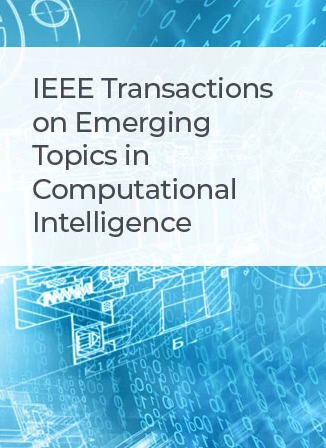CVRSF-Net: Image Emotion Recognition by Combining Visual Relationship Features and Scene Features
IF 5.3
3区 计算机科学
Q1 COMPUTER SCIENCE, ARTIFICIAL INTELLIGENCE
IEEE Transactions on Emerging Topics in Computational Intelligence
Pub Date : 2025-03-10
DOI:10.1109/TETCI.2025.3543300
引用次数: 0
Abstract
Image emotion recognition, which aims to analyze the emotional responses of people to various stimuli in images, has attracted substantial attention in recent years with the proliferation of social media. As human emotion is a highly complex and abstract cognitive process, simply extracting local or global features from an image is not sufficient for recognizing the emotion of an image. The psychologist Moshe proposed that visual objects are usually embedded in a scene with other related objects during human visual comprehension of images. Therefore, we propose a two-branch emotion-recognition network known as the combined visual relationship feature and scene feature network (CVRSF-Net). In the scene feature-extraction branch, a pretrained CLIP model is adopted to extract the visual features of images, with a feature channel weighting module to extract the scene features. In the visual relationship feature-extraction branch, a visual relationship detection model is used to extract the visual relationships in the images, and a semantic fusion module fuses the scenes and visual relationship features. Furthermore, we spatially weight the visual relationship features using class activation maps. Finally, the implicit relationships between different visual relationship features are obtained using a graph attention network, and a two-branch network loss function is designed to train the model. The experimental results showed that the recognition rates of the proposed network were 79.80%, 69.81%, and 36.72% for the FI-8, Emotion-6, and WEBEmo datasets, respectively. The proposed algorithm achieves state-of-the-art results compared to existing methods.CVRSF-Net:结合视觉关系特征和场景特征的图像情感识别
近年来,随着社交媒体的普及,旨在分析人们对图像中各种刺激的情绪反应的图像情感识别引起了人们的广泛关注。由于人类的情感是一个高度复杂和抽象的认知过程,简单地从图像中提取局部或全局特征是不足以识别图像情感的。心理学家Moshe提出,在人类对图像的视觉理解过程中,视觉对象通常与其他相关对象嵌入在一个场景中。因此,我们提出了一种双分支的情感识别网络,称为组合视觉关系特征和场景特征网络(CVRSF-Net)。在场景特征提取分支中,采用预训练的CLIP模型提取图像的视觉特征,采用特征通道加权模块提取场景特征。在视觉关系特征提取分支中,使用视觉关系检测模型提取图像中的视觉关系,使用语义融合模块融合场景和视觉关系特征。此外,我们使用类激活图对视觉关系特征进行空间加权。最后,利用图关注网络获取不同视觉关系特征之间的隐式关系,设计双分支网络损失函数对模型进行训练。实验结果表明,本文提出的网络对FI-8、Emotion-6和WEBEmo数据集的识别率分别为79.80%、69.81%和36.72%。与现有方法相比,所提出的算法达到了最先进的结果。
本文章由计算机程序翻译,如有差异,请以英文原文为准。
求助全文
约1分钟内获得全文
求助全文
来源期刊

IEEE Transactions on Emerging Topics in Computational Intelligence
Mathematics-Control and Optimization
CiteScore
10.30
自引率
7.50%
发文量
147
期刊介绍:
The IEEE Transactions on Emerging Topics in Computational Intelligence (TETCI) publishes original articles on emerging aspects of computational intelligence, including theory, applications, and surveys.
TETCI is an electronics only publication. TETCI publishes six issues per year.
Authors are encouraged to submit manuscripts in any emerging topic in computational intelligence, especially nature-inspired computing topics not covered by other IEEE Computational Intelligence Society journals. A few such illustrative examples are glial cell networks, computational neuroscience, Brain Computer Interface, ambient intelligence, non-fuzzy computing with words, artificial life, cultural learning, artificial endocrine networks, social reasoning, artificial hormone networks, computational intelligence for the IoT and Smart-X technologies.
 求助内容:
求助内容: 应助结果提醒方式:
应助结果提醒方式:


